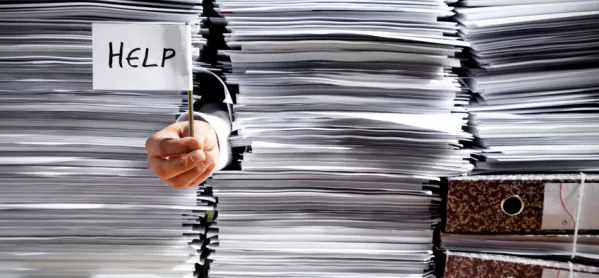The problem with teacher workload is that much of it feels out of our control at the best of times.
And when you’re in the throes of a global pandemic that’s hitting like a slow tsunami of ever-increasing pressure, suggestions about how to manage your time efficiently can feel insultingly out of touch.
Coronavirus: Tips to help teachers manage their workload
And so the following strategies won’t magically get rid of all you have to do right now but they might serve as useful reminders to help you adapt to the challenges we’re facing.
List absolutely everything
My dad got me into lists when he gave me David Allen’s Getting Things Done. Allen’s core message is that every individual task must go on your list.
This means simply putting down “plan Year 11 lessons” is a no-no. Instead, we need to break it down into things like “adapt booklet page for OneNote”, “export OneNote page to students”, and “schedule Year 11 P1”.
When you make a list like this, it’s easier to see what you need to do next. You’re then empowered to get little things done when there’s time.
I won’t be able to “plan Year 11 lessons” in the 10-minute gap between meetings but I can upload some resources to Teams in preparation.
Accept imperfection
Accepting imperfection is the recognition that what we’ve done could have been better alongside the admission that it doesn’t matter right now.
It’s posting resources and setting assignments so you can’t tinker with them any longer. It’s replying to a colleague without feeling that you have to craft your response. It’s not giving in to the temptation to work non-stop at becoming a remote-learning expert.
My best lessons online have been the simplest ones, where I have uploaded a booklet page to OneNote, asked some questions about it, modelled something and set students off on a task.
Block out time for a task. When the time’s up, do your best to move on.
Give feedback
As I’ve led remote learning at our school in the past year, I’ve been grateful to the staff who have given me feedback about things that haven’t worked. That feedback is vital for improving workload.
Go ‘home’
The end of your working day could benefit from a proper routine. I try to write a list for the next morning and leave it on my desk before literally closing the door on work.
Some home-working teachers are unpacking and repacking their work bags just to give the working day a definitive start and end point. At times, I’ve taken the work email off my phone to help distinguish between work time and home time.
For me, going downstairs to do a jigsaw with my daughter is ample distraction at the end of the day. Finding these distractions doesn’t reduce the pressure you’re under but it does allow you to start again the next day feeling a little more refreshed.
Pete Foster is an assistant head for teaching, learning and curriculum at an all-through school in Somerset


